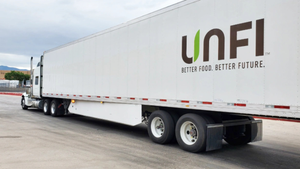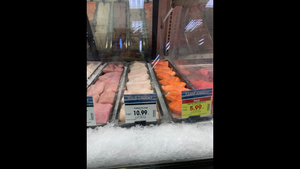How to Convert In-Store Loyalists to Omnichannel Shoppers
Q&A with Michael Novosel of Cardlytics. Michael Novosel of Cardlytics discusses the challenges and benefits of courting this important, but elusive consumer.
October 28, 2021

Omnichannel adoption is critical to success in today’s highly competitive grocery market, yet many brands struggle to convert and then retain these shoppers. To learn more about how grocers can overcome the omni challenge, WGB sat down with Michael Novosel, industry lead, grocery, gas and convenience for Cardlytics, an advertising platform in banks’ digital channels that collects and analyzes purchase data to see where and when customers buy, both online and in-store.
Jennifer Strailey: You’ve said brands frequently share that one of their key challenges is omnichannel adoption. Why do you think this is the case?

Michael Novosel
Michael Novosel: That’s right. Generally, this comes down to the fact that many brands did not have strong data architecture in place before the pandemic. Those who had already invested heavily in digitizing their loyalty offers and collecting first-party data on their customers had a great head start. They were able to capture consumer behavior during the peak of COVID when a lot of individuals were trialing brands through online shopping. They could also observe what that consumer did in-store versus online, and then personalize engagement with that consumer to drive omnichannel adoption. This data has become vital for pre-empting future consumer behavior and driving omnichannel adoption at the customer level.
Brands with fewer resources were not able to quickly provide omnichannel options, and as a result, lost customers who could easily shop elsewhere based on convenience and shifting channel preferences. With little to no baseline of omnichannel customer data pre-COVID, it has been even more challenging for grocers to come back from customer attrition.
Why is omnichannel adoption so important?
Our data tells us that omnichannel customers have more long-term value (LTV) due to the fact that they spend more, are more loyal, and will spend more with competitors if grocers don’t adopt an omnichannel approach.
You have found that many grocers are experiencing higher trial frequency since COVID, but spotty loyalty. How can grocers use data to combat this problem?
The acceleration of online trials that COVID drove created two fundamental issues for most brands: No. 1, higher vulnerability to brand preference and No. 2, an increased disparity in channel preference. Our research has shown that over the past year, more than 70% of new customers with any given grocer have come directly from online trials. Consumers sheltering-in-place were simply incentivized to trial the brands they loved and already knew in online environments (if they existed), or brands they had never shopped with that successfully engaged them online, swaying them into consideration and action. The value of convenience has had a lasting impact on customer preference.
Brands can take immediate action to bring back in-store loyalists by focusing on driving those loyal customers to try shopping online through loyalty programs and other cash back incentives. At Cardlytics, we can look at customers anywhere along the loyalty continuum and identify—based on past purchase behavior, in-store or online preferences and how they spend with competitors—who is most likely to become an omnichannel customer. Our data shows that omnichannel shoppers spend more than those who shop in-store or online alone.
To give an example, if a regional grocer like a Food Lion, ShopRite or Giant Company were to convert an in-store loyalist to adopt their brand on an omnichannel basis, their 12-month LTV grows nearly four times, from $759 a year to $2,850 a year. By focusing on in-store loyalist conversion to omni, grocers can not only successfully defend against the threat that online pure-plays pose to capturing that consumer’s online channel preference, but also expand total wallet share capture.
What types of offers/personalization have you found most successful in attracting repeat customers and building shopper loyalty?
When we’re working with our partners, we aim to analyze consumer behavior and brand preference within the grocery category and outside of it (i.e, restaurants), to best discern how to personalize messaging and drive engagement at the consumer level. Through partnerships with financial service partners, Cardlytics has a complete view of consumer spend both online and in-store without ever collecting personally identifiable information (PII). By knowing where, when, and how a consumer shops, we can help grocers be strategic in how they reach customers in our native banking environments: Where (online or in-store), when (day and time), and how (product level) they are likely to shop.
One simple example of analyzing behavior outside of the category looks at consumers who historically bought take-out for their family pre-lock-down, trialed online grocery during COVID, but reverted back to their former behavior once shelter-in-place was removed. By observing this shift in behavior, we help grocers identify which groups of consumers may view grocery shopping as ‘friction-filled’ and thus prone to reverting back to pre-COVID behavior. We then focus on reaching them in-bank and elsewhere with messaging and creative that features more convenient options such as prepared foods, pickup and delivery options, and other capabilities that make grocery shopping more competitive with a delivery experience.
Looking inside the category we help our grocers drive repeat behavior and loyalty with customers by analyzing those that were heavily brand loyal but allocated their share of wallet to competitors during the pandemic. In doing so, we can identify how their basket size and wallet allocation changed over time and get them to return to previous behavior through offers that align with their past purchase preferences. One example: If I used to spend $50 per trip at Kroger, and suddenly Kroger sees my per visit spend declining, Cardlytics helps Kroger identify where the consumer shifted share. Kroger can then target those customers with an offer that incents return to previous behavior, such as “spend greater than $50 on your next visit to Kroger and get % cashback.”
How does Cardlytics’ data help grocers elevate the way in which the single-channel vs. the omnichannel customer behaves with a given brand?
We are in the unique position of having observed customer-level spend data spanning 55% of card-based transactions directly from the financial institutions themselves. As many grocers learned during COVID, historical sources of understanding and reacting to consumer behavior, such as in-store panel data, became more irrelevant and less actionable. Given that we can clearly see, direct from the banks, how a consumer spends in-store and online with a specific merchant, we can immediately help our grocer partners understand how their single-channel and omnichannel customer behaves not only within their walls, but elsewhere.
Is it also important to analyze how the competition is performing with the single-channel and omnichannel customer?
Yes. Our first-party purchase intelligence looks at how customers spend within any given grocer and its competitors, helping marketers identify the best consumer segments for advertisers to target with relevant, native ads within bank’s digital channels. Whether they are new, existing or lapsed customers, we know this approach works because we can see purchase behavior to provide a completely accurate view of incremental sales impact down to the penny.
Even today’s most advanced brands that have strong first-party data still don’t have the ability to understand relative share of wallet capture accurately per customer like we do, and ultimately that’s what matters at the end of the day. If you’re a public company and reporting how phenomenal of a job you did in driving per customer sales, that’s great, but the first thing Wall Street will assess is how you did on a relative basis to your peers.
In our world, analyzing competitive spend at a customer level helps identify the root cause of the change in consumer behavior. For example, did the consumer just spend more in grocery as a whole or did their spend remain the same? Do we just need to do a better job of capturing more of their share? By running share of wallet analysis, we help our partners reveal the answer to this very question and use the results to inform their broader go to market strategy.
About the Author
You May Also Like






